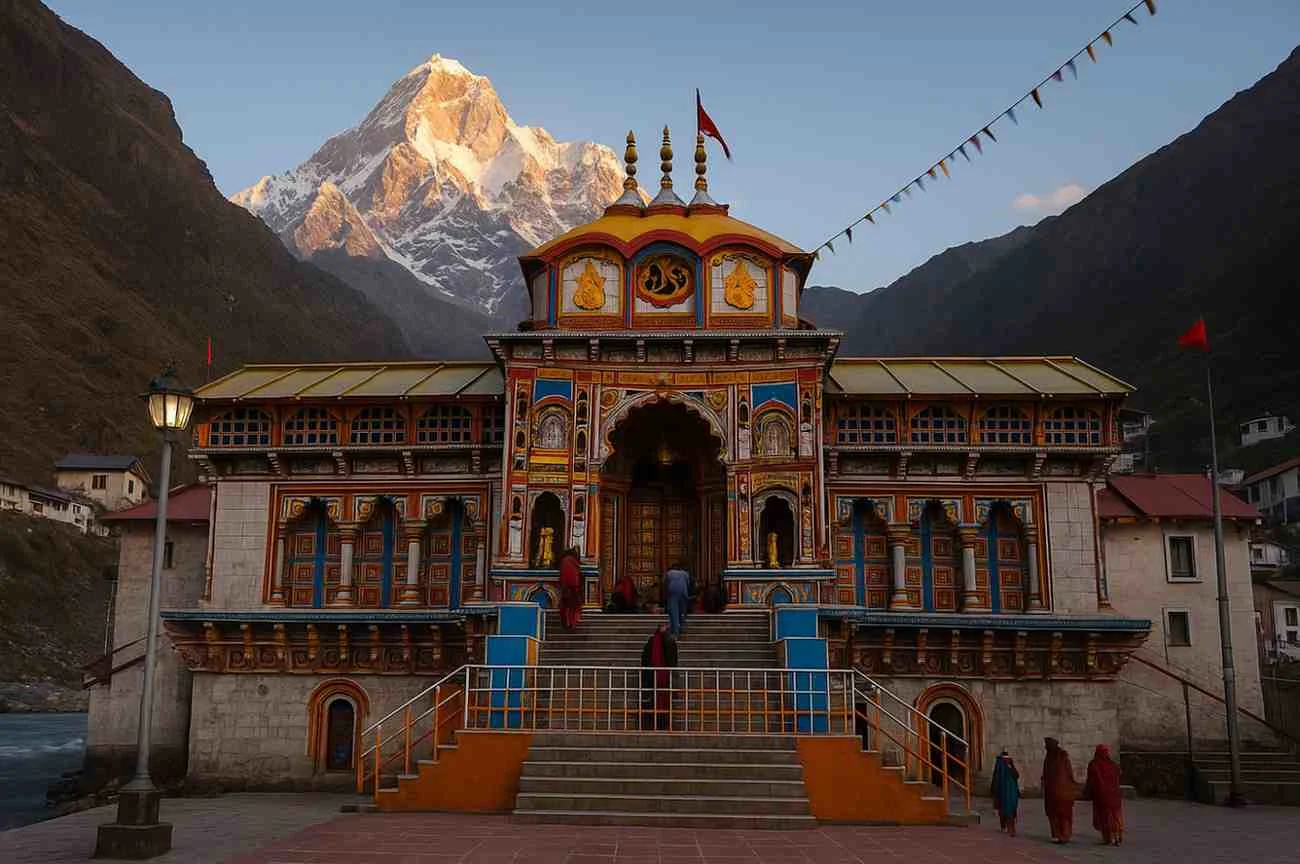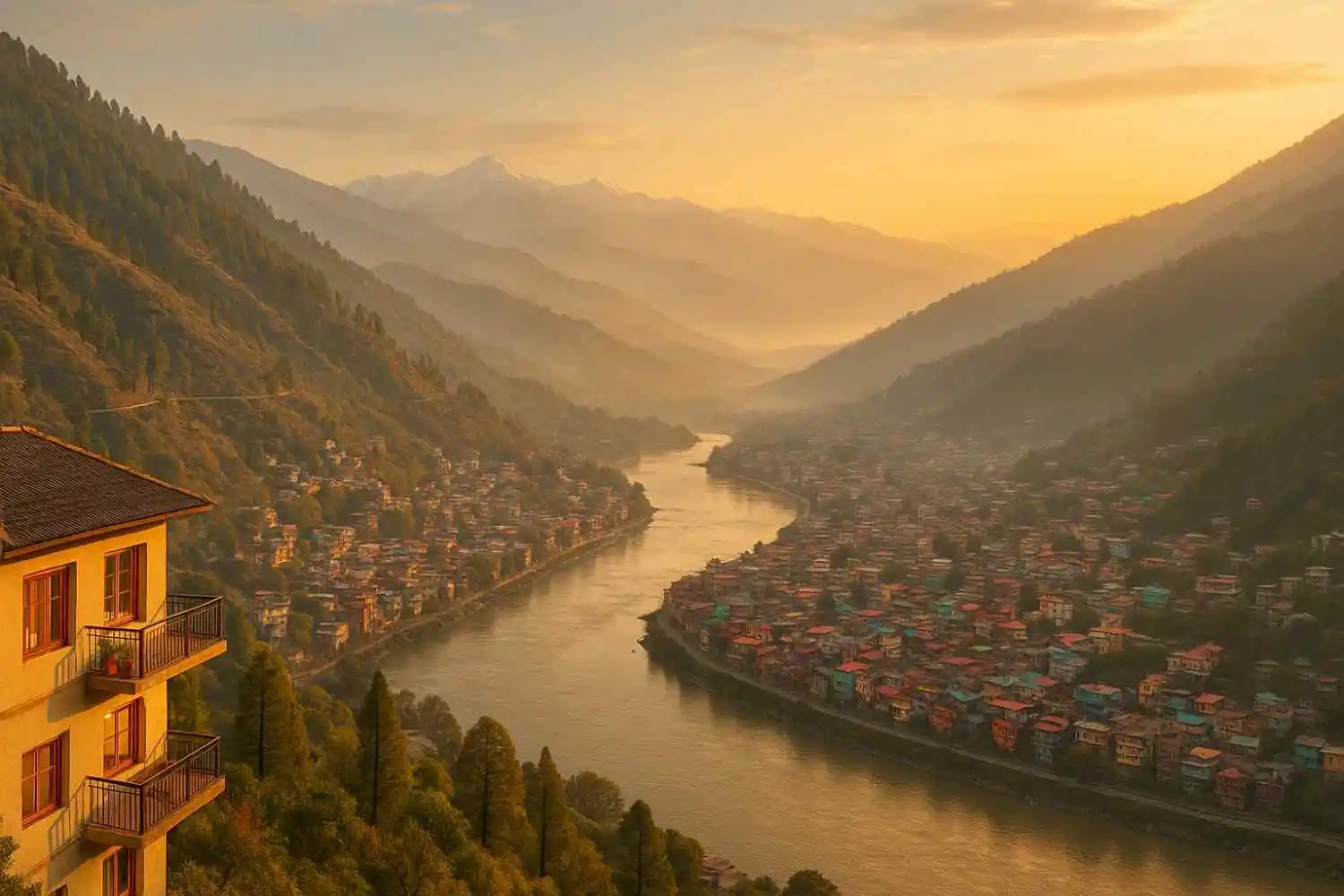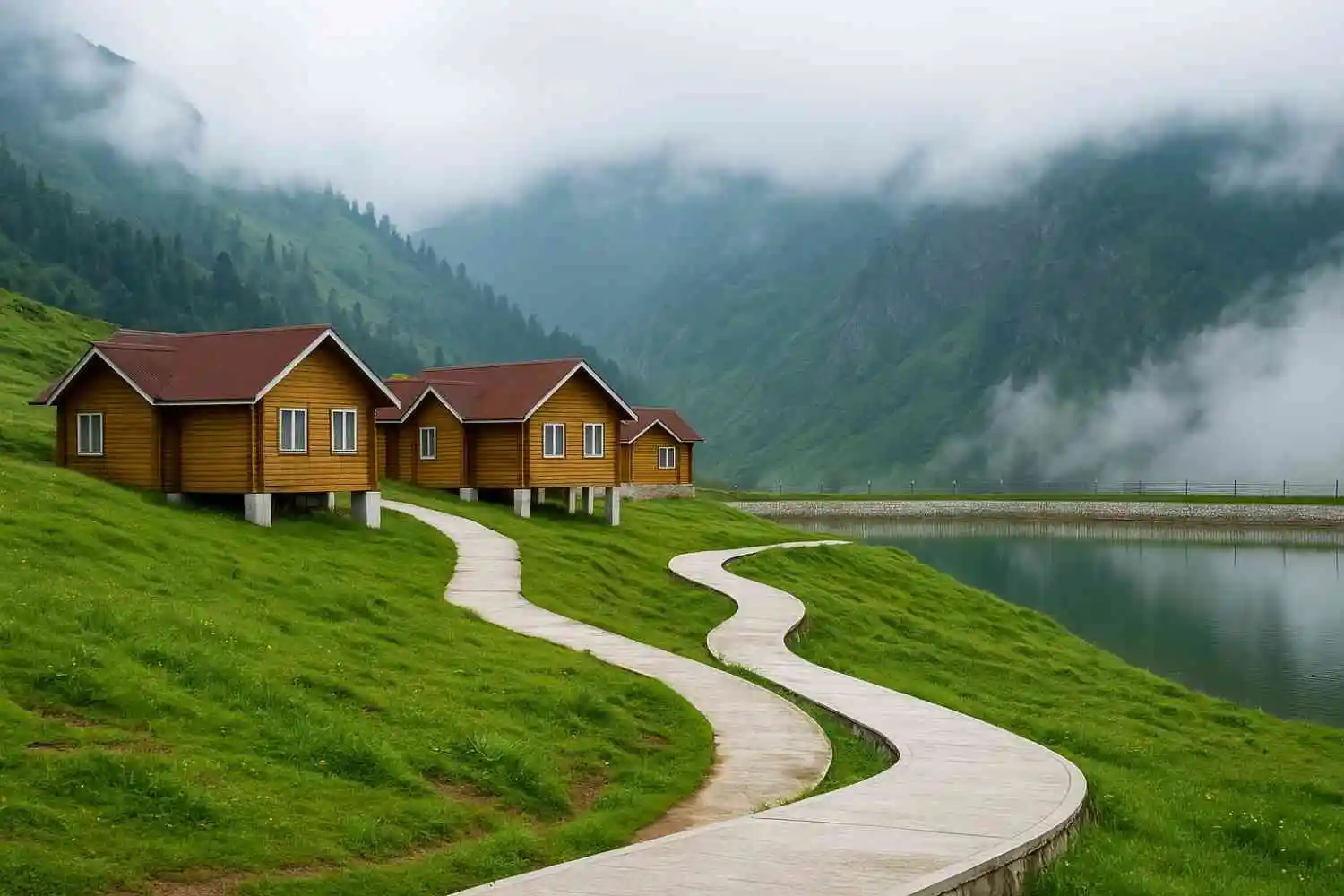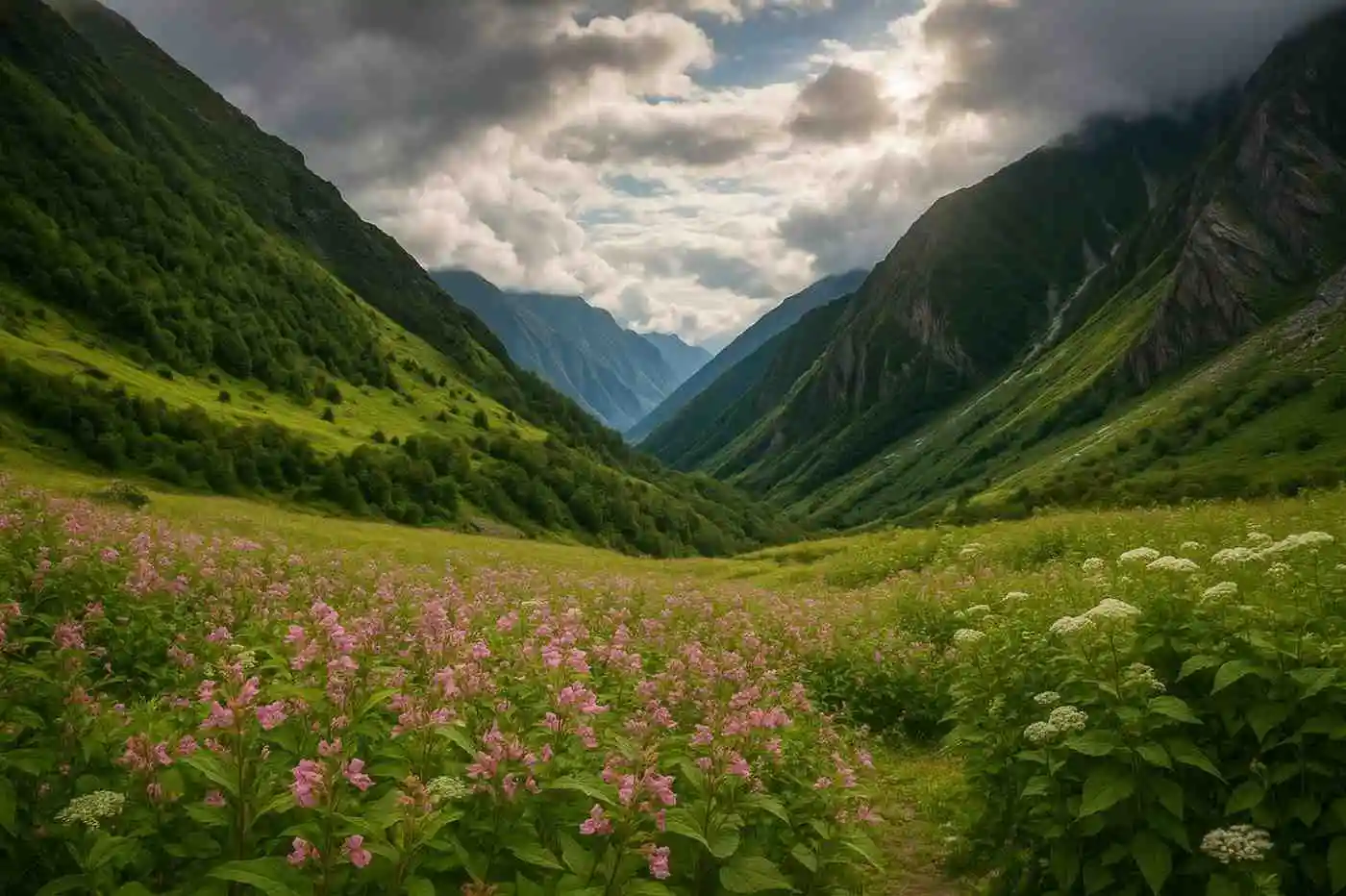Tapovan Hot Springs are natural geothermal springs bubbling out of rocky ground above Joshimath in Uttarakhand. Picture wisps of steam curling up from sulphur-rich pools while the wind carries the smell of wet stone and alpine shrubs. It’s not a manicured spa; it’s raw Himalayan energy, where hot water meets cold mountain air. People come for a soak, for the views, and for the stories: sages in penance, minerals that soothe aching legs after treks, and the simple joy of standing in a quiet place that still feels wild.
Why is it a must-visit? Two reasons. First, the spiritual pull: “Tapovan” literally translates to a forest of meditation, and the area has long been associated with austerities and purification rituals. Second, the natural science: a live lesson in Himalayan geology where heat from the Earth’s surface as near-boiling water—powerful enough to make you step back before you step in. That mix of sacred and scientific curiosity makes Tapovan a perfect half-day add-on to a Joshimath/Auli itinerary.
Location & How to Reach Tapovan Hot Springs
Tapovan sits roughly 14–15 km by road from Joshimath town. Shared jeeps and taxis ply this short, scenic stretch, and most drivers in Joshimath know the pool area well. Expect a straightforward 40–60 minute drive, depending on season and roadwork. Local travel portals and guide pages commonly list Tapovan as 14 km from Joshimath, with easy jeep access from the taxi stand.
1. Best transport options
- Shared jeeps from Joshimath taxi stand: Budget-friendly, frequent in season.
- Hired taxi: Convenient if you’re carrying extra clothing or traveling with family.
- Self-drive: Possible in dry weather, but mountain driving experience helps; park only at designated pull-outs.
2. Nearest airport and railheads
- Airport: Jolly Grant Airport, Dehradun. Travelers typically fly into Dehradun, then drive via Rishikesh–Rudraprayag–Joshimath.
- Rail: Rishikesh or Dehradun railway stations are the common gateways; connected by road to Joshimath. These are the usual access points mentioned in regional travel resources for Tapovan/Joshimath.
Route tip: If you’re already in Auli, descend to Joshimath, hire a jeep, and combine Tapovan with Narsingh Temple or a Ukhimath/Badri circuit day.
Natural & Geological Significance Tapovan Hot Springs
Tapovan’s pools are a window into the Himalaya’s restless basement. Rain and snowmelt percolate through deep fractures, meeting hot rocks at depth. Heated water rises back up, picking up dissolved minerals on the way—sulphur being the most noticeable here.
1. How hot is the water?
Researchers and news reports often cite ~89–90°C for Tapovan’s emerging water—scalding by any standard, and strong evidence of a high geothermal gradient. A Times of India report discussing potential geothermal power in Uttarakhand specifically notes about 89°C for Tapovan, Joshimath.
2. What’s in the water?
Sulphur is the headline mineral. Locals point to the yellowish deposits and the characteristic smell; visitors frequently describe a “boiling” appearance and caution about the heat. Travel write-ups and user reviews routinely mention the sulphur content and perceived skin benefits.
3. Why it matters
Beyond a soothing soak, Tapovan hints at geothermal potential in the Garhwal. Scientific groups (e.g., WIHG in Dehradun) have surveyed dozens of Himalayan hot springs across Uttarakhand and Himachal to evaluate future, small-scale power or direct-use heating projects.
Healing & Spiritual Importance of Tapovan Hot Springs
“Tapovan” is literally a forest for penance—a place where ascetics sought purification and clarity. Local lore ties the springs to sages who meditated here, using the hot waters for ritual cleansing before prayers. Whether or not you lean into the legends, the setting encourages quiet: steam hisses from vents, hills fold into each other, and conversations naturally drop to a whisper.
1. Commonly claimed benefits
- Skin: Sulphur springs are traditionally thought to help certain skin conditions and minor irritations.
- Muscles and joints: Warmth eases post-trek soreness, especially after long days around Auli or valley hikes.
- Stress relief: The sensory contrast—cold air, hot water, open sky—relaxes most people within minutes.
Important caveat: these are traditional claims and visitor anecdotes. If you have medical conditions, speak to your doctor first.
Tapovan Hot Springs Visitor Experience
What do you actually do at Tapovan? Keep it simple.
1. Soak or foot-dip
There are natural pools and outlets where locals and travelers take a bath or at least a careful foot-soak. The water near the sources can be extremely hot. Many TripAdvisor reviewers warn first-timers to test slowly and avoid direct inlets; scalding is possible.
2. How long should you stay?
Plan 45–90 minutes on site. That covers: a slow approach, testing water temperature, a relaxed soak, and time to dry and change clothes. Add more if you’re combining with a short ramble for photos.
Best photo points
- Steam billows against cool morning light.
- Reflections in calmer pools downstream of the hottest vents.
- The classic “hand above the steaming surface” shot—just don’t lean over an active vent.
Essential safety tips
- Test before soaking: Ease in near cooler edges, never at the primary outlet.
- Watch kids: Keep children and pets away from vents and slick rocks.
- No soap/shampoo: It pollutes the spring and is frowned upon by locals.
- Hydrate: Hot water + altitude = quicker dehydration than you expect.
Best Time to Visit Tapovan Hot Springs
The sweet spot for Tapovan follows the wider Garhwal travel calendar:
- Spring (March–April): Snowline retreats, roads stabilize, skies are cleaner.
- Summer (May–June): Pleasant mornings; go early to beat mid-day heat and traffic.
- Autumn (Sept–Oct): Post-monsoon clarity, lush slopes, and crisp air.
Avoid or be cautious during:
- Monsoon (July–Aug): Landslide risk, muddy pull-outs, and occasional closures.
- Peak winter (late Nov–Feb): Cold waves and intermittent road blocks; check local advisories.
These windows align with typical Uttarakhand travel guidance and on-ground experience around Joshimath/Auli every year.
Tapovan Hot Springs Nearby Attractions
Make a half-day loop or a full day out of it.
1. Auli
Auli is one of India’s best-known ski slopes with a famous cable car from Joshimath. In winter, you come for snow; in summer, you come for the meadows and big-mountain panoramas. Great pairing with a noon soak in Tapovan.
2. Narsingh Temple (Joshimath)
An important Vaishnavite shrine and a cultural anchor for the town. Drop by for a quiet darshan and temple architecture.
3. Bhavishya Badri
One of the Panch Badri shrines. The approach combines road and an easy walk through villages; expect views, prayer bells, and a slower pace than the main Badri.
4. Scenic stops
Valley overlooks the Joshimath–Tapovan stretch, small villages where you can grab chai, and short trails that break off the road for quick photo ops. If you’re trekking-inclined, chat up local guides about day hikes in the Tapovan–Kagbhusandi belt in fair weather.
Geothermal Energy Potential
This bit is fascinating. Hot water in Tapovan isn’t just a curiosity—it represents usable heat. Over the last decade, scientists in Uttarakhand have discussed tapping hot springs for direct heat applications (drying produce, heating greenhouses, bathing complexes) and, where feasible, small-scale power. A 2015 piece noted Tapovan’s water emerging around 89°C, highlighting it as a candidate site for research, while a 2020 update summarized surveys of ~70 hot springs across Uttarakhand and Himachal to shortlist promising locations.
Reality check
- Electricity generation at these temperatures typically requires binary cycle technology and robust environmental safeguards.
- The region’s seismicity, ecology, and cultural sensitivity mean any project must proceed slowly and transparently, with community consent and rigorous monitoring.
What this means for travelers
For now, Tapovan remains a natural soak and geo-tourism site. If a pilot heating project or interpretive center appears in future seasons, it could add guided walks about Himalayan geology and responsible energy.
Practical Tips for Visitors
Pack list
- Quick-dry clothing and a towel; carry a spare set if you plan to bathe.
- Slip-resistant sandals or water shoes for rocky edges.
- Waterproof pouch for phone, and a trash bag for your waste.
- Drinking water and light snacks; there may be simple stalls, but don’t depend on them.
Local guides and permits
- No special permit is typically required for Tapovan hot springs.
- A local driver or guide helps if you want to explore beyond the main pool or understand the vents and safe spots better.
- Always follow signage and local instructions—they change based on water level and recent landslides.
Where to stay
Base yourself in Joshimath (lodges, mid-range hotels, homestays) or Auli (resorts, tourist bungalows). Reviews sometimes mention places whose owners can organise a quick Tapovan run and suggest the best time of day to go.
Respect the sacred
Even if you’re there for the geology, remember locals consider the springs holy. Keep voices low, dress modestly around bathing areas, and keep soaps and shampoos out of the water.
Safety, Conservation & Responsibility
1. Safety first
- Water near outlets can be near-boiling; temperature can fluctuate after rains. Test slowly. Multiple visitors explicitly warn about scalding at Tapovan; take that seriously.
- Avoid alcohol before a soak; it dulls judgement and increases dehydration risk.
- Limit time in very hot water to 5–10 minutes at a stretch; step out, cool down, re-enter if you must.
2. Conservation
- You’re in a fragile Himalayan valley. Pack out every wrapper and bottle.
- Don’t carve names on rocks, build rock piles, or disturb vent areas.
- Stick to existing paths; trampling destroys delicate alpine vegetation.
Local culture and current context
Joshimath has been ecologically sensitive in recent years due to subsidence concerns and pressure from infrastructure projects. Travel responsibly, support local businesses, and stay updated on district advisories before your trip.
Sample Half-Day Plan
- 8:00 AM: Breakfast in Joshimath.
- 8:30 AM: Hire jeep; drive to Tapovan.
- 9:30 AM: Arrive, scout pools; test water with hand/foot at cooler edges.
- 9:45–10:15 AM: Short soak; hydrate; repeat once if you like.
- 10:30 AM: Dry off, photos, and a short stroll for steam-against-mountains shots.
- 11:15 AM: Drive back with a tea stop at a village viewpoint.
- 12:30 PM: Back in Joshimath; lunch and onward plan for Auli/Narsingh Temple.
Responsible Photography
- Ask before photographing locals bathing.
- Avoid drones unless you have explicit permission; they disturb both people and wildlife.
- Steam looks best in morning light; keep lenses away from direct hot vapour to avoid condensation damage.
Troubleshooting & What-ifs
- Road closed after rain? Check with the Joshimath taxi union; they’ll know about fresh slips and safe time windows.
- Water too hot to bathe in? Try a foot-soak downstream; the temperature drops within a few meters as hot water mixes with cooler flow.
- Traveling with the elderly or kids? Keep visits short, avoid slippery rocks, and skip bathing if balance is an issue.
Quick Facts (at a glance)
- Distance from Joshimath: ~14–15 km by road.
- Water temperature: commonly reported ~89–90°C at source.
- Key mineral: sulphur (distinct smell and deposits).
- Access: shared jeeps/taxis from Joshimath; short walks around pools.
- Season: spring–summer–autumn best; avoid peak monsoon/harsh winter.
Final Word
Here’s the thing: Tapovan isn’t a theme park, it’s a living spring system perched in a sensitive mountain valley. Treat it with the same respect you would a temple—move gently, leave nothing behind, and keep the water clean for the next person and the next season. Do that, and your time here will feel less like a pit stop and more like what it is: a rare encounter with heat rising from the heart of the Himalaya.
FAQs
Emerging water is frequently reported around 89–90°C near the primary outlets—hot enough to scald—so always test before entering.
Yes, if you’re cautious: avoid the hottest inlets, check temperature with your hand, limit soak time, and keep kids well away from vents; many visitors specifically warn about scalding risks.
Roughly 14–15 km by road via a short, scenic drive; shared jeeps and taxis are readily available in season.
Traditionally, sulphur springs are believed to help with some skin issues, soothe sore muscles and joints, and reduce stress—claims rooted in local practice rather than clinical trials.
Go in spring, summer, or autumn for stable roads and clear views; avoid the monsoon and the harshest winter weeks due to landslides and closures typical in Himalayan districts.
Hire a shared jeep or taxi from the Joshimath taxi stand; the ride takes under an hour in usual conditions. From Dehradun/Rishikesh, travel by road to Joshimath first.
There’s generally no formal entry ticket for the natural pools themselves; however, parking or local facility charges can vary by season—carry small cash.
Stay in Joshimath (homestays, lodges, mid-range hotels) or Auli; many hosts can arrange a Tapovan visit and advise on the best hour to go.
You usually drive close and then walk around the pools; if you want longer walks or village trails nearby, hire a local guide. Some third-party blogs mention longer treks in the broader region, but most visitors simply make it a half-day drive-and-soak.
It’s a geothermal manifestation with high temperatures and has been discussed for potential direct use or small-scale power in research circles, but any future project would need careful studies and environmental safeguards.






